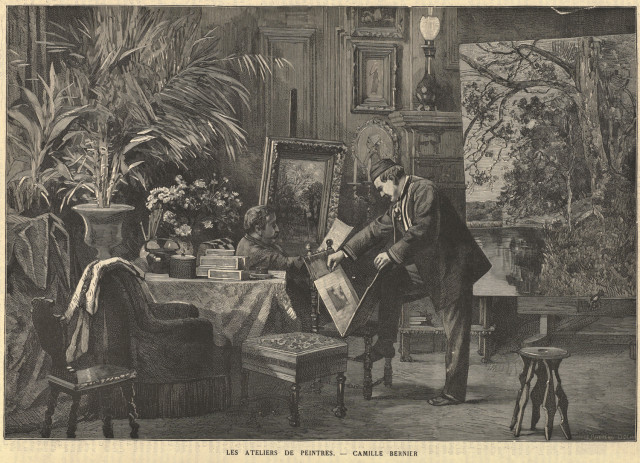From 1983: “The artist continues to be priced out of his or her home and is forced to move on.” Decades later, artists’ rental situations remain precarious.
The statement comes from a 114-page report published by architect Carmi Bee, “Artists’ Housing: A Survey of Live/Work Space,” funded in part by the National Endowment for the Arts (NEA). Bee surveyed artists about studio and living spaces in eight cities: Boston, New York, Chicago, Minneapolis/St. Paul, Seattle, Portland, San Francisco, and Los Angeles.
Which problems are we still facing, and which ones have we lost? As artists in New York form collectives (like the Artist Studio Affordability Project, ASAP) and co-ops (Real Estate Investment Cooperative, REIC), looking back to the 1980s might give some insight into how not to be priced out. The early 1980s was an especially fraught time in New York, with the city-run Artist Home Ownership Program, which would have turned two blocks of tenements in the Lower East Side into live/work spaces as artist co-ops. ”This is the first attempt by the city to provide home-ownership opportunities to moderate-income artists by recycling abandoned buildings,” said New York Mayor Ed Koch at the time. The proposal was eventually rejected by city board members after residents protested that the artist co-ops would have spurred on gentrification, and the eventual displacement, of longtime residents.
Which problems are we still facing?
1. Ownership, particularly in the form of co-ops, is seen as one of the best ways for artists to create a stable live/work situation. (Though there is some disagreement on this issue, as we saw at Stay in Bushwick conference.)
From “Artists’ Housing: A Survey of Live/Work Space”:
Attempts to stop gentrification are unrealistic, but minimizing its bad effects on artists may be possible. The most productive efforts will probably be those that provide ownership opportunities for artists, either as individuals or in cooperative ventures.
2. Not to tread on well-trodden ground, but artists are poor.
From “Artists’ Housing: A Survey of Live/Work Space”:
Traditionally, and by the inherent nature of their commitments, artists do not usually have a great deal of money.
3. Artists moving into an area are the first sign of gentrification, but eventually, they become displaced by those same forces of gentrification.
From “Artists’ Housing: A Survey of Live/Work Space”:
Neighborhood revitalization, which sounds like a positive force, is often detrimental for artists. Artists are frequently the first people to move into undesirable and underutilized areas, often illegally. But once the political battles have been fought and certain buildings revitalized, property values rise, non-artists, restaurateurs, boutique proprietors, etc., move in. The artists are unable to keep pace with rising rents and are forced out, leaving their renovations behind. Ironically, the artists help to attract the very people who eventually displace them.
4. Artists are moving out of Manhattan, but they’re having a hard time affording Brooklyn.
From “Artists’ Housing: A Survey of Live/Work Space”:
The escalating cost of lofts in Manhattan has forced artists to migrate to areas ·of Brooklyn and New Jersey, where according to recent reports, rental costs are also rising beyond the means of most artists.
What have we lost since the 1980s?
1. Artists lived in huge lofts.
From “Artists’ Housing: A Survey of Live/Work Space”:
“Most artists live and work in lofts” and the artist housing was “predominantly lofts in manufacturing buildings.” (Ah, the dream of the 1980s!)
2. Most artists kept their studio in their home.
From “Artists’ Housing: A Survey of Live/Work Space”:
First, and most scarce, is that of the artist who lives in a conventional house or apartment and has a studio in another location. This was seen primarily in Portland, where rents are comparatively low.
3. The typical studio was pretty sweet, compared to today’s standards.
From “Artists’ Housing: A Survey of Live/Work Space”:
Generally, ceilings are high, twelve feet or more. There is natural light, augmented by walls painted white. Interior dividing walls are low or non-existent so that the public and private areas flow together.
4. Several of the artist housing spaces in New York have changed, or folded, since the 1983 study.
- Westbeth, founded 1967 and completed in 1969
The first housing project for artists are still around, though they’re hard to get into and can be lived in by all sorts of artists, including actors and musicians. Children of residents can have an apartment, too. However, its Section 8 contract expires in 2017.)
- Manhattan Plaza, built 1977
Originally built as conventional housing but, like Westbeth, converted to housing for performing artists.
- 799 Greenwich Street, founded 1965
Still an artist’s co-op, but it could run you in the millions.
- Mason Mint Building in Brooklyn
In 2003, Praedium Management purchased the building for $6.6 million; in 2013, the property was flipped for “nearly $20 million to a real-estate developer who is expected to turn the one-time artists’ colony into luxury apartments.” And the developer did; the building now goes by the generic-enough sounding name 20 Henry Street.



Comments on this entry are closed.